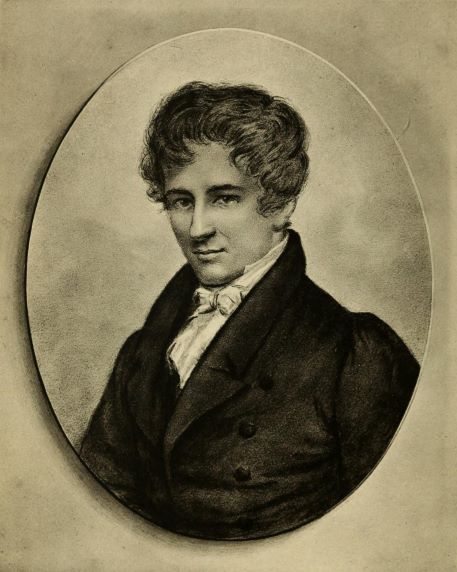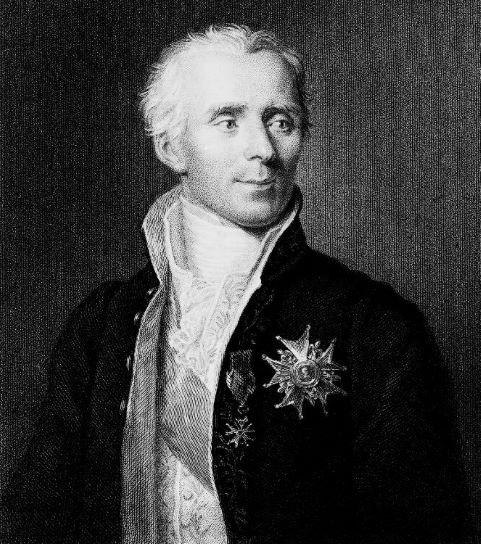- About MAA
- Membership
- MAA Publications
- Periodicals
- Blogs
- MAA Book Series
- MAA Press (an imprint of the AMS)
- MAA Notes
- MAA Reviews
- Mathematical Communication
- Information for Libraries
- Author Resources
- Advertise with MAA
- Meetings
- Competitions
- Programs
- Communities
- MAA Sections
- SIGMAA
- MAA Connect
- Students
- MAA Awards
- Awards Booklets
- Writing Awards
- Teaching Awards
- Service Awards
- Research Awards
- Lecture Awards
- Putnam Competition Individual and Team Winners
- D. E. Shaw Group AMC 8 Awards & Certificates
- Maryam Mirzakhani AMC 10 A Awards & Certificates
- Two Sigma AMC 10 B Awards & Certificates
- Jane Street AMC 12 A Awards & Certificates
- Akamai AMC 12 B Awards & Certificates
- High School Teachers
- News
You are here
Quotations in Context: Abel
“By studying the masters and not their pupils.”
Modern publications that include the quotation above will sometimes provide a bit of context, claiming that the mathematician Niels Henrik Abel made the statement in reply to a question about how exactly he became so adept at mathematics so quickly. However, this version of events appears to trace back only to the writings of Howard Eves [Eves 1972, p. 106], and no older work that I’ve found claims that Abel was actually responding to another person’s query.

Painting of Abel, ca 1820. Public domain, Wikimedia Commons.
The original source for this quotation is a marginal note Abel made to himself during a tour of Europe. Following an extended stay in Berlin, as well as a bit of sightseeing in the Alps, Abel arrived in Paris in the summer of 1826 and stayed there until the end of the year. Soon after his arrival in Paris, he purchased a bound notebook and wrote “Mémoires de Mathématiques par N. H. Abel” on the cover, although the notebook also goes by the (perhaps less exciting) title of “MS:351:A” in the manuscript collection of The National Library of Norway.
When a collection of the complete works of Abel was published in the late 19th century, it did not reproduce the entire Parisian notebook, but a brief summary of the notebook’s contents was included at the end of the second volume [Abel 1881, pp. 283–285]. On pages 75–79 of the notebook, Abel performed a set of calculations under the title, “Sur une espèce particulière de fonctions entières nées du développementde la fonction \(\frac{1}{1-v}e^{-xv/(1-v)}\) suivant les puissances de \(v\)” [On a particular species of integer functions born of the development of the function \(\frac{1}{1-v}e^{-xv/(1-v)}\) according to the powers of \(v\)].

Stipple engraving of Laplace by James Posselwhite after Jacques-André Naigeon.
Public domain, Wellcome Collection.
In the course of these investigations, Abel was moved to praise the work of Pierre-Simon Laplace in the margin next to the calculations, and it is here that we discover the quotation that is the subject of this column. Shown below is a transcription of the original French text of the marginal notes, together with an English translation:
Si l’on veut savoir comment on doit faire pour parvenir à un résultat plus conforme à la nature il faut consulter l’ouvrage du célèbre Laplace où cette theorie est exposée avec la plus grande clarté et dans une extension convenable à l’importance de la matière. Il est en outre aisé de voir qu’une théorie écrite par M. Laplace doit être bien supérieure à toute autre donnée des géomètres d’une classe inférieure. Au reste il me paraît que si l’on veut faire des progrès dans les mathématiques il faut étudier les maîtres et non pas les écoliers.
If one wants to know what one should do to obtain a result in more conformity with Nature one should consult the works of the famous Laplace where this theory is exposed with the most clarity and to an extent in accordance with the importance of the subject. It is also easy to see that a theory written by M. Laplace must be much superior to any other written by less bright mathematicians. By the way, it seems to me that if one wants to progress in mathematics, one should study the masters and not the pupils [Sørensen 2010, pp. 20–21].
A photographic reproduction of the final sentence in Abel’s handwriting can be seen in The Abel Prize: 2008–2012 [Holden 2014, p. v].
References
Abel, Niels Henrik. 1881. Œuvres Complètes de Niels Henrik Abel. Edited by Ludvig Sylow and Sophus Lie. 4th ed. Vol 2. Christiania, Norway: Grøndahl & Søn.
Eves, Howard W. 1972. Mathematical Circles Squared. Boston: Prindle, Weber & Schmidt.
Holden, Helge, and Ragni Piene, eds. 2014. The Abel Prize 2008–2012. Berlin: Springer-Verlag.
Sørensen, Henrik Kragh. 2010, October. The Mathematics of Niels Henrik Abel: Continuation and New Approaches in Mathematics During the 1820s. RePoSS: Research Publications on Science Studies 11. Aarhus: Centre for Science Studies, University of Aarhus.
“Quotations in Context” is a regular column written by Michael Molinsky that has appeared in the CSHPM/SCHPM Bulletin of the Canadian Society for History and Philosophy of Mathematics since 2006 (this installment was first published in November 2018). In the modern world, quotations by mathematicians or about mathematics frequently appear in works written for a general audience, but often these quotations are provided without listing a primary source or providing any information about the surrounding context in which the quotation appeared. These columns provide interesting information on selected statements related to mathematics, but more importantly, the columns highlight the fact that students today can do the same legwork, using online databases of original sources to track down and examine quotations in their original context.
Michael Molinsky (University of Maine at Farmington), "Quotations in Context: Abel," Convergence (September 2024)




